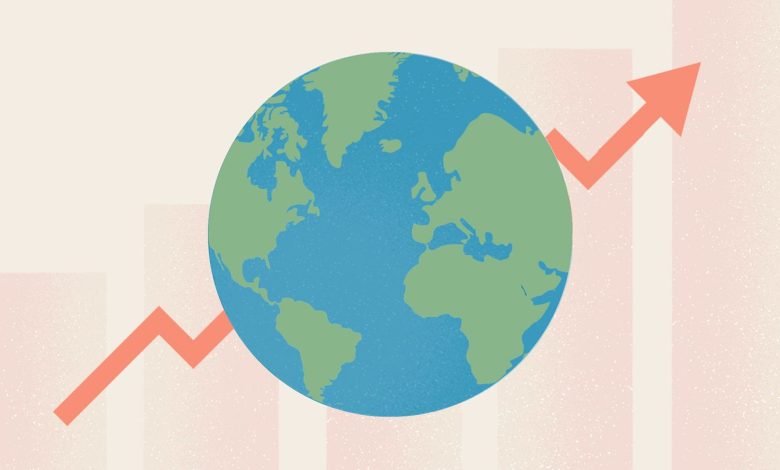Global Stroke Deaths Are Expected to Skyrocket in Coming Decades, New Report Says

[ad_1]
The number of people who die of stroke worldwide is expected to increase by 50 percent by 2050, a new report warns.
According to the World Health Organization (WHO), every year, 15 million people globally have a stroke. Of those, about 5 million die and another 5 million become permanently disabled.
Although stroke outcomes have drastically improved in the United States over the past few decades — stroke deaths have moved from the third to the fifth leading cause of death, per data from the Centers for Disease Control and Prevention (CDC) — those strides are not evenly distributed around the world. WHO data shows that since 2005, the global probability that a person will have a stroke has increased by 50 percent. It’s also the second leading cause of death worldwide.
The new report, published October 9, 2023, in the Lancet Neurology, projects low- and middle-income countries will experience the worst stroke burden in the coming years, and that more strokes will occur in everyone, including increasingly in younger people, regardless of where a person lives.
“Stroke is going to be one of the main public health issues over the next 30 years,” says Salman Azhar, MD, the director of the stroke program at Northwell Lenox Hill Hospital, who was not involved in the report. But, “as dismal as these numbers sound, there are interventions we can do.”
Growing Risk, Fewer Resources
In the new report, global stroke experts estimate that by 2050, 91 percent of stroke deaths — 8.8 million people — will occur in low- and middle-income countries, compared with 86 percent today. At the same time, stroke deaths in high-income countries are expected to remain at around 900,000 through the next three decades, widening the disparity gap.
“The biggest thing is that uncontrolled risk factors are becoming more prevalent,” says Eseosa Ighodaro, MD, PhD, a stroke neurologist, neuroscientist, and health disparities researcher at Emory University Hospital and Grady Memorial Hospital in Atlanta. “We’re becoming heavier as a world. We’re becoming more sedentary, and diabetes and high blood pressure are on the rise.”
These lifestyle changes are creating more chronic diseases in general, says Bruce Ovbiagele, MD, a professor of neurology and an associate dean at the University of California in San Francisco.
According to Dr. Ovbiagele, hemorrhagic stroke, which is caused by a ruptured blood vessel in the brain, is also more common in some low- and middle-income countries compared with wealthier nations. Data published by the National Library of Medicine shows hemorrhagic stroke is more common in low- and middle-income countries and among Asian individuals.
“That’s the type of stroke that is more lethal,” says Ovbiagele, which may also contribute to an increasing amount of stroke deaths in the coming years.
But another factor is more positive: People in low- and middle-income countries are living longer than before, meaning there are more older people in these nations living long enough to have a stroke. This is a phenomenon called the epidemiological transition, or changing patterns in fertility and mortality, including life expectancy and causes of death, Ovbiagele notes.
But low- and middle-income countries are also less equipped to handle a rise in strokes.
“These countries don’t have the kind of medical infrastructure that we do in high-income countries,” says Ovbiagele, noting that the fact that stroke incidents are on the rise worldwide alone will increase the number of people dying from stroke. “But the fact that more of these strokes are happening in these places where these resources aren’t there, this could lead to even more stroke deaths in those countries, and therefore globally, moving forward.”
Time is critical in stroke treatment. Both survival and recovery are drastically reduced if a person is not treated for a stroke within hours of having one. Being able to get to a hospital and be treated with clot-busting drugs or surgery immediately is critically important, but the resources a person has access to after receiving acute treatment greatly improve a person’s chances of recovering without becoming disabled. The new report estimates the direct costs and loss of income will more than double, to $2.31 trillion in 2050. Asian and African countries are expected to feel the bulk of these economic impacts.
“There is a shortage of specialty care and limited access to things like physical therapy, cognitive therapy, or neurologists,” Dr. Ighodaro says. “That plays a big role in poor stroke outcomes.”
A Solvable Problem
The most important thing to keep in mind is that the majority of strokes are not inevitable; they are preventable, says Ovbiagele.
“We know there is a tsunami coming, so right now is the best time to address it,” he says.
Individuals can play a role in reducing their own stroke risk by not smoking, exercising regularly, eating a diet that’s low in processed food and high in vegetables, and managing existing conditions, including type 2 diabetes and high blood pressure.
But for big shifts to happen, change will also need to occur at the systemic level, says Ovbiagele.
“We have known for 50 years that African Americans have a higher burden of stroke than white Americans. But we can only explain 50 percent of that disparity through higher incidence of risk factors like hypertension,” he adds.
According to Ighodaro, social determinants of health — factors like access to healthcare, healthy food, and where a person lives — likely account for higher stroke burdens in Black Americans here in the United States, as well as higher stroke burden in low- and middle-income countries.
“It’s not an easy fix,” says Ighodaro. “It’s going to take governments realizing this is a fix and allocating the finances needed to develop infrastructure in low- and middle-income countries and right here in the United States.”
[ad_2]




